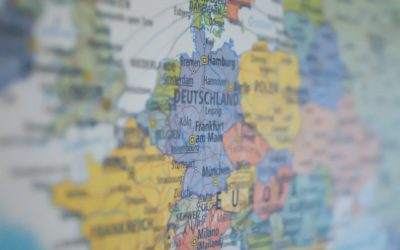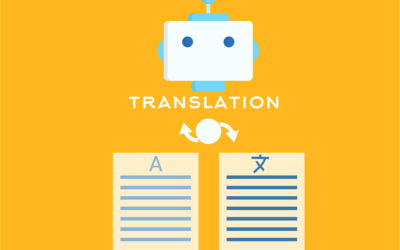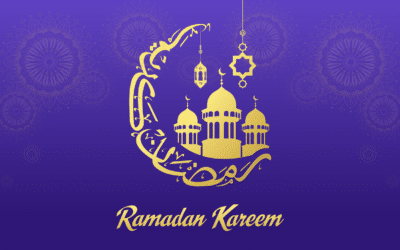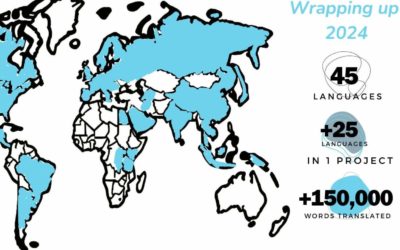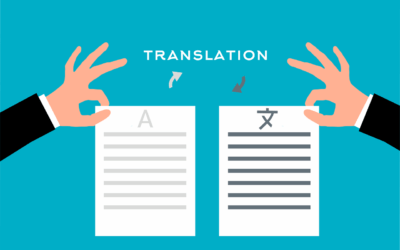Read our Translation Blog
Get the latest fun and facts from the language industry with our blog!
Need advice on website translation and localization?
Browse our ONLINE SHOP for ebooks on how to translate a website!
LingoStar’s Blog 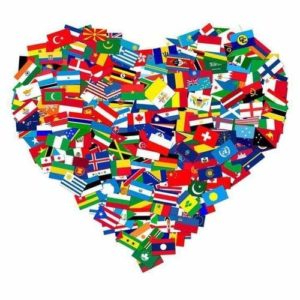
Welcome to LingoStar’s blog! On this page, you can find a lot of interesting and useful information about the translation industry. Explore topics on website translation and localization and how successful localization can influence your business to help your company grow and go global.
Language Blog Topics
On this blog, you can also learn about professional translators and interpreters, multilingual search engine optimization (SEO), the importance of socializing and networking and translators’ professional ethics. Quite often we write posts about the languages of the world, other cultures, and their traditions. Not only do translators convert texts from a source language to a target language, but they also help people communicate with each other, help establish international contacts, and are often prominent figures in the social, economic, and political life. Lastly, of course, we want you to have fun, so on our blog, you can find many posts that will entertain you and, hopefully, make you smile!
We hope you enjoy our blog and discover a lot of interesting things!
Spanish and Tagalog: How Two Languages Shaped The Filipino Culture
Spanish Tagalog roots in Filipino history For centuries, Spanish and Tagalog have shaped Filipino culture, influencing daily life, traditions, and national identity. When Spain colonized the Philippines in the 1500s, Spanish became the language of government, religion, education and trade. Rather than replacing Tagalog, Spanish blended with it—creating a unique linguistic mix now known as Spanish Tagalog. This blend has had a lasting impact on the way Filipinos speak, think and express their cultural values. From thousands of Spanish loanwords to Catholic traditions, art, architecture and cuisine, the influence of Spanish and Tagalog has transformed Filipino society. Even today, Filipinos use Spanish-derived words in everyday conversation, celebrate Spanish-inspired festivals and bear Spanish surnames that reflect their history. The result is a rich cultural identity in which language serves as a bridge between the Philippines’ indigenous roots and its colonial past. Spanish Tagalog words in everyday Filipino life Spanish Tagalog words are prevalent in Filipino conversations, shaping how people describe objects, time, and daily activities. Standard terms such as mesa (table), silya (chair), kutsara (spoon), tinidor (fork), sapatos (shoes) and trabaho (work) all originate from Spanish. These words have become so ingrained in the Filipino language that most people use them without a second thought, unaware of their Spanish origins. Moreover, the way Filipinos tell the time also reflects this fusion. Phrases such as alas dos (two o’clock) and alas tres (three o’clock) follow Spanish patterns. Numbers such as dos, tres, kuwatro, and sinkuwenta often feature in informal conversations. Beyond vocabulary, even polite expressions, greetings, and everyday phrases have Spanish roots, adding cultural depth to daily communication. The everyday use... read moreK-Pop Albums: Bilingual Beats and The Power of English and Korean in Global Rise
The global appeal of K-pop albums K-pop albums have captured the world’s attention because they represent more than just music—they embody a lifestyle, identity, and global community. Their universal appeal lies in their ability to combine high-quality production, visually stunning performances, and emotionally engaging stories that transcend language barriers. For example, in the digital era, platforms such as YouTube, Spotify, and TikTok made it possible for international fans to access K-pop albums instantly. The vibrant visuals, synchronized choreography and multilingual lyrics attract listeners who may not understand Korean, yet still feel an emotional connection to the music. Moreover, the fandom culture surrounding K-pop albums strengthens their global reach. Fans translate lyrics, share Korean-to-English translations and even create subtitles for videos. This helps others understand the meaning behind the songs. This collaboration between fans and artists has transformed K-pop albums into powerful instruments for global connection and cultural exchange. English and Korean in music albums: The perfect fusion K-pop albums blend English and Korean beautifully, creating music that feels both international and authentically Korean. The use of English phrases in titles and choruses makes songs easy for fans worldwide to sing along to, while the Korean lyrics preserve the music’s emotional depth and cultural identity. Artists such as BTS, BLACKPINK, and Twice demonstrate how two languages can coexist harmoniously in music. Through this fusion, K-pop albums promote not only entertainment but also cultural understanding. Many international fans begin exploring Korean-to-English and English-to-Korean translations in order to fully appreciate the lyrics, which sparks curiosity about the Korean language and culture itself. BLACKPINK, BTS, and Huntri/X: Iconic K-pop albums that broke barriers... read moreGerman Dialects: How They Shape Daily Life in Germany
German dialects influence everyday life When people think of German dialects, they often picture a single, uniform way of speaking. In reality, however, Germany is linguistically rich and diverse. Countless dialects give each region of the country its own distinct sound, rhythm, and vocabulary. From daily conversations to cultural traditions, German dialects influence almost every aspect of life. Whether you’re strolling through a Bavarian village, exploring Cologne, or enjoying the northern coastline, you’ll notice linguistic variations that reflect centuries of history, migration, and local pride. Why are German dialects so diverse? Germany is home to a remarkable variety of dialects. In fact, the differences can be so significant that someone from one region might struggle to fully understand a person from another. These differences aren’t just accents – they often involve unique vocabulary, grammar, and pronunciation that distinguish each region. Traditionally, linguists divide German dialects into Low German and High German. High German is then further subdivided based on geography and historical sound shifts: Low German (Plattdeutsch): Spoken in northern Germany (Lower Saxony, Schleswig-Holstein and parts of Mecklenburg-Vorpommern), it features clear, open sounds and is closer to English and Dutch than Standard German. For example, the verb maken (“to make”) resembles the English more than the Standard German machen. High German: Spoken in the central and southern regions, High German is divided into Central German and Upper German.Central German: Found in Hesse, Thuringia, Saxony, and parts of the Rhineland, these dialects blend northern and southern traits. In Cologne, for example, people say Wat instead of Was (“what”), while in Hesse, certain word endings may be dropped altogether. Upper German:... read moreCertified Translation in Canada
Certified Translation in Canada: Why you need it In Canada, certified translation is essential when submitting documents for immigration, legal or educational purposes, as it ensures official recognition and accuracy. Canadian authorities such as Immigration, Refugees and Citizenship Canada (IRCC), universities and licensing offices often require translations that are not only accurate, but also officially certified. Certified Translation in Canada: What it means In Canada, certified translation is a translated document that includes a signed declaration from a certified translator confirming that the translation is accurate and complete. Only translators accredited by Canadian translator associations can issue this type of certification. Many Canadian institutions including IRCC, courts, universities and regulatory bodies, require a certified translation for documents to be accepted. Therefore, certified translators play a key role in ensuring that important documents written in other languages are officially recognized and accepted by institutions across Canada. Certified Translation in Canada: Five document requirements for Canadian immigration Canadian immigration authorities, such as IRCC, require all documents not written in English or French to be accompanied by a certified translation. Below are the five most common documents that require this service: Birth, marriage, or divorce certificates – These personal status documents are required to verify identity, family relationships or marital history. Immigration documents – Any visas, permits or immigration-related paperwork issued by other countries must be translated to support your Canadian Permanent Residence (PR) or citizenship application. Academic diplomas and transcripts – Whether you are applying for a study permit or an immigration program that assesses your level of education (such as Express Entry), certified translations of your academic records are a... read moreAI Translation: Balancing Technology and Human Expertise
AI Translation: A quick overview AI translation is transforming the language industry by offering faster, more accessible solutions. However, it is important to understand how AI tools work in order to use them effectively. You’ve probably used Google Translate, DeepL, or ChatGPT to understand or translate a sentence, document, website. While these tools are convenient, they don’t always deliver accurate or reliable results, especially for more complex or professional content. In this blog post, we examine how AI translation works, its strengths and weaknesses, and why human translators continue to play a key role in ensuring quality, accuracy and cultural relevance. How AI translation works and why it matters AI translation tools use machine learning and neural networks to generate translations based on massive amounts of multilingual data. These systems recognize patterns in language and suggest likely translations based on context. Modern tools go beyond word-for-word translation. They analyze sentence structure and grammar to produce text that sounds more natural. However, AI doesn’t understand tone, culture or nuance, so it’s essential to use it carefully. For example, HSBC’s global slogan “Assume Nothing” was once automatically translated as “Do Nothing” in some markets, completely altering the intended message and forcing a costly rebranding campaign.Similarly, American Airlines promoted its luxury leather seats with the phrase “Fly in Leather,” which, when introduced in Spanish-speaking markets, was interpreted as “Fly Naked.” This caused confusion and forced the airline to withdraw the campaign, which is now considered a classic example of why professional translation and cultural awareness are important in global marketing. The strengths of AI translation in today’s industry AI translation offers clear... read moreFamous Bilingual Celebrities in the Entertainment Industry
Discover how famous bilingual celebrities built global careers through language Famous bilingual celebrities in entertainment, such as Salma Hayek, Shakira and Bradley Cooper, are proving that being multilingual is a secret weapon in the entertainment world. Their ability to connect with audiences in different languages helps them reach new heights and opens doors worldwide. What makes famous bilingual celebrities in entertainment stand out in a global market? In today’s interconnected world, they are not just entertainers; they are also cultural ambassadors. More importantly, their bilingualism enables them to connect with a variety of audiences, ensuring their work has a deeper resonance. Because of this, they build stronger global fan bases. This unique ability gives them influence that transcends borders and helps them establish a powerful global presence. That’s why bilingual celebrities in entertainment are often chosen for international roles and brand collaborations. Famous bilingual celebrities break barriers—and open new doors Language opens up new opportunities, emotions and meaningful connections, and is about more than just communication. In fact, many famous bilingual celebrities use their language skills to transcend cultural boundaries. Consequently, this has enabled them to star in films, record music and collaborate internationally in ways that might not be possible for monolingual celebrities.For example, Bradley Cooper’s fluency in French has enabled him to connect deeply with European audiences. At the same time, Shakira’s ability to switch between Spanish, English, and Portuguese has helped her top the international charts. 10 multilingual stars who used their language skills to shine Let’s take a closer look at some well-known stars who speak more than one language, along with some surprising facts... read moreWhat Does Accessibility Mean in the Field of Translation?
Discover what accessibility means in the field of translation You may have heard the word “accessibility” before, but without fully understanding what it means, particularly in the context of translation. If you are curious and want to gain a better understanding of this concept, read on! What accessibility means: a brief definition To fully understand what we mean by “accessibility” it is important to distinguish between the word and the concept. According to the Cambridge Dictionary online, accessibility simply means “the quality of being easy to understand or enjoy”. However, as a concept, accessibility is defined as “the quality of being able to be entered or used by everyone, including people who have a disability”. The key word here is “disability”. Making a place, product or piece of information accessible means that everyone can access it, regardless of any disabilities they may have. Concrete examples If, after reading this first definition, you still don’t fully understand the concept of accessibility, don’t worry! Here are some examples of existing accessibility services: Audio description for the blind and visually impaired. A voice describes everything happening on the screen, enabling people to enjoy the action. This service also exists in certain museums to describe works of art. Subtitles for the Deaf and hard of hearing and/or closed captions. All sounds and dialogues are transcribed into subtitles. This service is also available in theatres and for some live events on television, where it is called live subtitling, ensuring real-time accessibility. Sign Language to help deaf people communicate in their everyday lives. It is also used for events on television, such as the news or short political addresses. Easy Languages for... read moreMultilingualism in Russia
Ethnic diversity and multilingualism in Russia Multilingualism in Russia has been a cornerstone of Russia’s cultural and political development throughout history. Much like the matryoshka doll, a worldwide symbol of Russian identity, the country comprises many interlocking languages and ethnic groups. This linguistic diversity offers a wealth of cultures and languages. However, it also presents challenges. Want to learn more? Keep reading! The historic roots of multilingualism in Russia From the Tsardom of Russia to the Russian Federation via Imperial Russia and the Soviet Union, multilingualism has always played a part in Russia’s history. Its vast territory brought together diverse peoples ranging from Eastern Europe to Northern Asia, resulting in a complex linguistic landscape that persists to this day. This legacy extended beyond Russia’s borders, especially into regions such as Moldova, shaped by centuries of Russian and Soviet influence. Following the annexation of Bessarabia (modern-day Moldova) by the Russian Empire and its subsequent integration into the Soviet Union, Russian became a dominant language in administration, education, and public life. Consequently, Moldova developed into a multilingual society. Nowadays, only Moldovan/Romanian is the official language; therefore, the majority of people speak it. However, Russian, Gagauz, Ukrainian and Bulgarian are also still spoken alongside Moldovan/Romanian. Russian remains influential, particularly in regions such as Gagauzia and Transnistria, reflecting the enduring impact of Russia’s multilingual and imperial past. Multilingualism in today’s Russia As the largest country in the world, Russia is home to multiple ethnic groups with their own languages and cultures. Around 190 ethnic groups speak between 100 and 150 different languages. Below is a non-exhaustive list of some of them: Armenian, Bashkir, Chuvash,... read moreWhat Is Localization: Bridging The Cultural Gap
What exactly is localization? “What exactly is localization and why is it so important today?” is a question worth asking in a globalized world where the internet and social media are bringing us all closer together. It is not only important that your product is available in several languages. It should also be correctly adapted to the target culture. The following article aims to provide information on the concept of localization and the benefits of localizing a product. The industry is relatively young. According to seasoned localization experts O’Hagan and Mangiron, the term was first used by software developers during the late 1980s. This was a time when companies found out that taking their product overseas was advantageous overall. The term “localization” refers to the process of adding and adapting cultural and linguistic elements that are foreign to the original product so that it is received positively in a foreign market. The term is commonly abbreviated to “l10n”. What is the difference between localization and translation? At first glance, you might think that localization is just another way of saying translation. However, this misconception is on the same level as thinking that translation is a simple language conversion, rather than a complex process that often involves technical terminology and attention to detail. In this sense, while translation involves the conversion of a text and its terms from one language to another, localization focuses more on the target culture of the product and its linguistic particularities. Ultimately, the main aim is to reach a wider market overall. For example, if you want your product to resonate with someone in the... read moreRamadan: The Holy Month of Islam
Discover Ramadan, the holy month of Islam Ramadan, the holy month of Islam and the ninth month of the Islamic lunar calendar, is celebrated worldwide. This year’s Ramadan began on Friday, February 28, 2025 and lasts until Saturday, March 29, 2025. But what do you know about this holiday? If you want to know more, read on! What is Ramadan, the holy month of Islam? Ramadan is considered the holy month of Islam because it is believed that the Quran was revealed during this time. Indeed, God revealed the holy book of Islam in Arabic to the Prophet Muhammad as a guide. To celebrate and commemorate this meaningful event, Muslims all over the world fast from dawn to sunset for a month. However, for Muslims, the holy month of Ramadan is not just about fasting: it’s about a spiritual reset! The rules of Ramadan, the holy month of Islam Muslims around the world celebrate the holy month of Ramadan according to the following rules: Fasting and not drinking from dawn to sunset, which is one of the five pillars of Islam. Praying the five usual mandatory prayers as well as nightly prayers known as Taraweeh. Strengthening one’s connection to God, especially by reading the Quran. Being charitable and generous to others. In fact, giving – known as Zakat – is mandatory and another of the five pillars of Islam. Showing forgiveness and mercy to everyone. Being patient, self-disciplined and humble. Spending time with fellow Muslims by praying and eating together. Celebrating Eid al-Fitr, which marks the end of the holy month of Ramadan. A global holiday More than 1.8... read moreEnglish to French Translation in Canada: An Introductory Guide
The importance of English to French translation in Canada English to French translation in Canada isn’t just a skill—it’s a crucial bridge connecting communities, businesses, and individuals across linguistic boundaries. With approximately 7.5 million French speakers primarily concentrated in Quebec, New Brunswick, Ontario, and Manitoba, translation is more than an extra option—it’s a cultural necessity. For businesses, providing materials in both English and French is a clear demonstration of respect for linguistic diversity. It enhances brand reputation, strengthens customer relationships, and ensures that French-speaking clients feel valued. Beyond the corporate world, translation plays a critical role in education, healthcare, and community services. Schools in bilingual regions must accommodate both languages to provide equal opportunities for students. At the same time, healthcare providers and social organizations rely on accurate translation to offer essential services without language barriers. English-to-French translation is not just a professional courtesy—it is a crucial aspect of fostering connection and ensuring equitable access to information and services within the Canadian community. The legal landscape of bilingual communication Canada’s bilingualism policy, established in the Official Languages Act (1969) and reinforced by the Constitution, mandates that federal institutions provide services in both English and French. This ensures: Government services are accessible in both languages. Public announcements are communicated bilingually. Educational institutions accommodate both linguistic groups. At the provincial level, policies vary. Quebec’s Charter of the French Language prioritizes French in public life, business, and education, requiring people to adapt to regional legal and cultural contexts. Beyond compliance, Canada’s bilingualism policy promotes language learning and cultural exchange. Translators play a key role in supporting these efforts by ensuring clear, accessible... read moreAdd Captions to Reels: A Different Way of Enjoying Social Media Content
The perception of video captioning on social media If you’re scrolling through your phone and watching reels without sound, you can still follow along because most creators include captions. Audio is rarely essential for audiovisual content. Nowadays, every video on Instagram, TikTok, or even on YouTube reels has captions incorporated. Captions can be translated using the same automatic transcription and translation that we see on YouTube videos. But translations or transcriptions are not always accurate! This can happen if the video lacks clear audio. Even when the audio quality is good, the transcription may struggle to match the sentence structure, so humour may be lost in the literal translation. However, users can make small manual adjustments if needed. Cross-cultural communication at hand Captions can help bridge language barriers, allowing non-native speakers to understand sociological discussions and research findings. A great expert on media communication, Richard Grusin affirmed that media technologies construct and mediate experiences, leading to a new reconfiguration of how we understand certain concepts. Read The Future of Translation: Bridging Tradition and Innovation to learn how technology is leading to changes in the translation industry. Many applications offer the possibility of adding captions to videos (CAPCUT or iMovie for iOS) instantly, even in real time while the speaker is speaking. The creator will spend more time thinking about what to say rather than editing the video because these applications simplify many of the processes. This is a more efficient way of working because you only need to fine-tune the video script that has already been translated. Adding captions to reels as a means of accessibility and awareness Why add... read moreTranslation Projects 2024: A Festive Linguistic Journey
As the holiday bells chime and snowflakes dance, we at LingoStar Language Services are excited to unwrap our linguistic adventures from our translation projects 2024! Celebrating a Year of Global Communication in Translation Projects 2024 As we approach the most wonderful time of the year, we’re not just exchanging gifts. We’re sharing moments of joy, connection, and linguistic magic. If we could sum up our language projects in one word, it would be “share” – celebrating by connecting cultures, bridging languages, and spreading joy across continents. Every year brings its own tapestry of experiences, and 2024 is no exception. It’s a time to pause, reflect, and appreciate the milestones we’ve reached and the lessons we’ve learned along the way. What Translation Projects 2024 Lit Up Our Year? In our translation projects 2024, LingoStar transformed language barriers into global opportunities: Translated documents across 45 languages Translated English to French (Canadian), Spanish (Latin American) and Chinese as the most requested language pairs Simultaneous work on 25 languages in single projects Translated over 150,000 words Specialized translation projects including: French Canadian e-learning voiceover recordings Ethical hotline message translations in major European, Asian, and Indian languages Complex medical record transcriptions and translations in Hindi and Punjabi Wrapping Up Our Translation Projects 2024 Journey This year has been a wonderful journey of collaboration, learning, and connecting with amazing linguists and clients worldwide. We’ve worked with trusted translators, welcomed new linguistic talent, and continued to expand our global communications horizons. 🎁 LingoStar Video: Your Global Communication Superpower Need some translation magic? Since 2005, we’ve been transforming language barriers into business opportunities for Canadian companies. Our... read moreTranslation Companies: Life Partners for Your Multilingual Needs
Translation companies: Partners for your multilingual business Language company services are a cornerstone of successful global interactions, providing the necessary support to overcome language barriers. In today’s multicultural environment, communicating clearly and effectively with diverse audiences is essential for business growth. Quality translation services ensure companies can share their vision and values, facilitating stronger connections in international markets. With the right translation company, businesses can effortlessly navigate the complexities of multilingual communication. Which translation companies are right for your business? Choosing the right translation company is crucial for any business looking to expand globally. When evaluating translation companies, consider their expertise, range of services, and client reviews. A reputable translation company should offer not only basic document translation but also specialized options such as certified translation, marketing translation, software translation, technical and legal translation, and voice-over services to ensure that the nuances of your specific content are preserved. At LingoStar, we specialize in the IT and business sectors and deliver tailored solutions that meet your needs. Additionally, you can check our client reviews and testimonials to see the reliability and quality of our services. Our professional translators ensure that your message resonates with your target audience, taking into account both linguistic accuracy and cultural adaptation. Translation companies’ quality assurance Quality assurance is essential for any reputable translation company. At LingoStar, we implement rigorous processes and professional standards to ensure the accuracy and consistency of our translations. Our quality assurance includes multiple rounds of editing and proofreading, ensuring that your content is not only translated, but also polished to perfection. This commitment to quality helps us build long-term partnerships with our clients, ensuring they receive exceptional service every time. Long-term partnership... read moreHow to Start a Translation Business: Your Step-by-Step Guide to Success and Profitability
Building Your Foundation to Start a Translation Business Are you passionate about languages and eager to turn your skills into a thriving enterprise? Learning how to start a translation business can be an exciting and rewarding venture. This guide will walk you through the essential steps to starting and growing a profitable translation business, even if you’re new to the world of entrepreneurship or translation. How to Start a Translation Business: Your Step-by-Step Guide to Success and Profitability Educational background for your translation business While formal education isn’t always mandatory, a strong educational background can give you a significant advantage when starting a translation business. Consider the following: Bachelor’s degree in linguistics, foreign languages, or translation studies Master’s degree in translation or interpreting Certification from professional translation organizations Remember, continuous learning is key in this ever-evolving field. Stay abreast of language trends and industry developments to maintain your competitive edge as you start and grow your translation business. Developing business acumen To run a successful translation business, you’ll need more than just language skills. Here’s how you can build your business skills: Take online courses in business management and entrepreneurship Attend marketing and finance workshops for small businesses Join local business networking groups to learn from experienced entrepreneurs Invest time in an internship with a translation company. Therefore, these skills will be crucial as you start a translation business and work towards profitability. Launching your translation business If you want to stand out in a crowded market when starting a translation business, consider specializing in a specific area: Identifying your niche To stand out in the crowded market when... read moreTranslation Blog and News
LingoStar has been a language services provider in Canada, the USA, and Europe for more than a decade. We are proud to say that we cooperate with professional translators, interpreters, and other language specialists worldwide and work with over 100 language pairs. If you are looking for a reliable translation company, contact LingoStar! We are always ready to help you with your projects and documentation. Get a free quote online.


